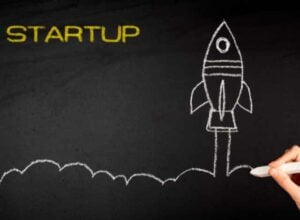In today’s fast-paced business environment, energy efficiency has emerged as a critical component of operational success. Companies are increasingly recognizing that energy-efficient office spaces not only contribute to environmental sustainability but also lead to significant cost savings. By reducing energy consumption, businesses can lower their utility bills, which can be redirected towards other essential areas such as employee development or technological advancements.
Moreover, energy-efficient practices can enhance a company’s reputation, making it more attractive to environmentally conscious clients and potential employees. The importance of energy efficiency extends beyond mere financial savings. A well-designed energy-efficient office can improve employee productivity and well-being.
Studies have shown that natural lighting, improved air quality, and comfortable temperatures can lead to higher job satisfaction and reduced absenteeism. As organizations strive to create a positive work environment, investing in energy efficiency becomes a strategic move that aligns with broader goals of employee engagement and retention. Thus, understanding the multifaceted benefits of energy efficiency is the first step toward creating a more sustainable and productive workplace.
Assessing Current Energy Usage and Identifying Areas for Improvement
Before embarking on an energy efficiency initiative, it is crucial for businesses to conduct a thorough assessment of their current energy usage. This involves analyzing utility bills, conducting energy audits, and utilizing monitoring tools to gather data on energy consumption patterns. By understanding how energy is currently being used within the office space, companies can identify specific areas where improvements can be made.
For instance, they may discover that certain equipment is consuming more energy than necessary or that heating and cooling systems are inefficiently regulated. Once the assessment is complete, businesses should prioritize the areas that present the greatest opportunities for improvement. This could involve upgrading outdated lighting systems to LED technology, implementing smart thermostats for better climate control, or enhancing insulation to reduce heating and cooling costs.
By focusing on high-impact changes, organizations can maximize their return on investment while making meaningful strides toward energy efficiency. Engaging employees in this process can also yield valuable insights, as they often have firsthand experience with the office’s energy usage and can provide suggestions for improvement.
Researching Energy-Efficient Technologies and Solutions
With a clear understanding of current energy usage and areas for improvement, the next step is to research available energy-efficient technologies and solutions. The market is brimming with innovative products designed to reduce energy consumption while maintaining or enhancing workplace comfort. For example, smart lighting systems equipped with motion sensors can automatically adjust brightness based on occupancy, ensuring that lights are only on when needed.
Similarly, energy-efficient appliances and equipment can significantly lower energy usage without sacrificing performance. In addition to individual products, businesses should also explore comprehensive solutions such as building management systems (BMS) that integrate various energy-saving technologies into a single platform. These systems allow for real-time monitoring and control of energy usage across the entire office space, enabling organizations to make data-driven decisions about their energy consumption.
Collaborating with industry experts or consultants can provide valuable insights into the latest trends and technologies in energy efficiency, ensuring that businesses are well-informed when selecting solutions that best fit their needs.
Creating a Comprehensive Proposal for Energy-Efficient Office Spaces
Once potential solutions have been identified, it is essential to create a comprehensive proposal that outlines the recommended changes and their anticipated impact on the organization. This proposal should include a detailed description of each proposed solution, including its benefits, implementation timeline, and estimated costs. Additionally, it should highlight how these changes align with the company’s overall goals and values, particularly in terms of sustainability and corporate responsibility.
A well-structured proposal will also address potential concerns from stakeholders by providing evidence-based data on the effectiveness of the proposed solutions. This could include case studies from similar organizations that have successfully implemented energy-efficient practices or statistics demonstrating the long-term cost savings associated with these changes. By presenting a compelling case for investment in energy efficiency, businesses can increase the likelihood of gaining buy-in from decision-makers and securing the necessary funding for implementation.
Calculating the Costs and Benefits of Implementing Energy-Efficient Solutions
An integral part of any proposal is a thorough analysis of the costs and benefits associated with implementing energy-efficient solutions. This involves not only calculating the initial investment required for upgrades but also projecting long-term savings on utility bills and maintenance costs. Businesses should consider factors such as payback periods—how long it will take for the savings to cover the initial investment—as well as return on investment (ROI) metrics to demonstrate financial viability.
In addition to direct financial benefits, organizations should also account for indirect advantages such as improved employee morale and productivity, enhanced brand reputation, and potential tax incentives or rebates for adopting green technologies. By presenting a comprehensive financial analysis that encompasses both tangible and intangible benefits, companies can make a stronger case for investing in energy efficiency initiatives. This holistic approach ensures that stakeholders understand the full value of the proposed changes beyond just immediate cost savings.
Presenting the Proposal to Stakeholders and Decision Makers
Once the proposal has been developed, it is time to present it to stakeholders and decision-makers within the organization. This presentation should be engaging and informative, clearly articulating the rationale behind the proposed changes while addressing any potential concerns or objections. Utilizing visual aids such as charts, graphs, and infographics can help convey complex information in an easily digestible format, making it easier for stakeholders to grasp the significance of the proposed solutions.
During the presentation, it is essential to foster an open dialogue by encouraging questions and feedback from attendees. This not only demonstrates transparency but also allows for valuable input that could enhance the proposal further. By actively involving stakeholders in the discussion, businesses can build a sense of ownership over the initiative, increasing the likelihood of support for implementation.
Ultimately, a well-executed presentation can be pivotal in securing approval for energy-efficient upgrades.
Implementing and Monitoring the Energy-Efficient Solutions
Once approval has been granted, the focus shifts to implementing the proposed energy-efficient solutions. This phase requires careful planning and coordination to ensure that upgrades are executed smoothly without disrupting daily operations. Businesses should establish a clear timeline for implementation and designate team members responsible for overseeing each aspect of the project.
Communication is key during this stage; keeping employees informed about upcoming changes fosters a culture of collaboration and encourages buy-in from all levels of the organization. Monitoring is equally important post-implementation to assess the effectiveness of the new solutions. Organizations should utilize energy management software or monitoring tools to track energy consumption patterns before and after upgrades are made.
Regularly reviewing this data allows businesses to identify any discrepancies or areas where further improvements may be needed. Additionally, soliciting feedback from employees about their experiences with new technologies can provide valuable insights into how well these solutions are functioning in practice.
Evaluating the Success and Making Adjustments for Continuous Improvement
The final step in enhancing energy efficiency in office spaces is evaluating the success of implemented solutions and making necessary adjustments for continuous improvement. This evaluation should involve comparing pre-implementation data with post-implementation results to determine whether projected savings were realized and if employee satisfaction has improved. Key performance indicators (KPIs) such as reduced energy consumption, lower utility costs, and enhanced employee productivity should be analyzed to gauge overall success.
Based on this evaluation, businesses may need to make adjustments or consider additional upgrades to further enhance their energy efficiency efforts. Continuous improvement is essential in maintaining an effective energy management strategy; as technology evolves and new solutions become available, organizations must remain agile in adapting their practices accordingly. By fostering a culture of sustainability within the workplace and regularly revisiting their energy efficiency goals, companies can ensure they remain at the forefront of environmental responsibility while reaping ongoing benefits from their investments in energy-efficient office spaces.























